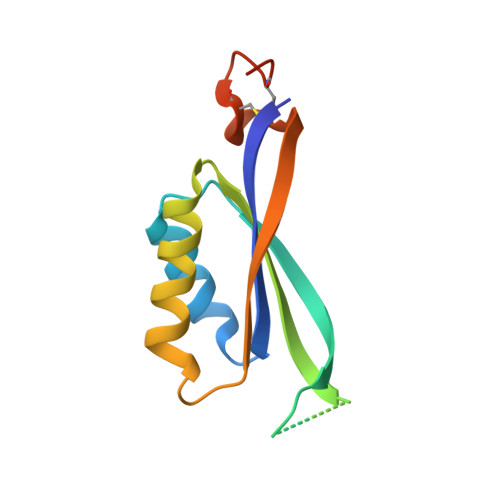Carbon signaling protein SbtB possesses atypical redox-regulated apyrase activity to facilitate regulation of bicarbonate transporter SbtA.
Selim, K.A., Haffner, M., Mantovani, O., Albrecht, R., Zhu, H., Hagemann, M., Forchhammer, K., Hartmann, M.D.(2023) Proc Natl Acad Sci U S A 120: e2205882120-e2205882120
- PubMed: 36800386
- DOI: https://doi.org/10.1073/pnas.2205882120
- Primary Citation of Related Structures:
7R2Y, 7R2Z, 7R30, 7R31, 7R32 - PubMed Abstract:
The PII superfamily consists of widespread signal transduction proteins found in all domains of life. In addition to canonical PII proteins involved in C/N sensing, structurally similar PII-like proteins evolved to fulfill diverse, yet poorly understood cellular functions. In cyanobacteria, the bicarbonate transporter SbtA is co-transcribed with the conserved PII-like protein, SbtB, to augment intracellular inorganic carbon levels for efficient CO 2 fixation. We identified SbtB as a sensor of various adenine nucleotides including the second messenger nucleotides cyclic AMP (cAMP) and c-di-AMP. Moreover, many SbtB proteins possess a C-terminal extension with a disulfide bridge of potential redox-regulatory function, which we call R-loop. Here, we reveal an unusual ATP/ADP apyrase (diphosphohydrolase) activity of SbtB that is controlled by the R-loop. We followed the sequence of hydrolysis reactions from ATP over ADP to AMP in crystallographic snapshots and unravel the structural mechanism by which changes of the R-loop redox state modulate apyrase activity. We further gathered evidence that this redox state is controlled by thioredoxin, suggesting that it is generally linked to cellular metabolism, which is supported by physiological alterations in site-specific mutants of the SbtB protein. Finally, we present a refined model of how SbtB regulates SbtA activity, in which both the apyrase activity and its redox regulation play a central role. This highlights SbtB as a central switch point in cyanobacterial cell physiology, integrating not only signals from the energy state (adenyl-nucleotide binding) and the carbon supply via cAMP binding but also from the day/night status reported by the C-terminal redox switch.
- Interfaculty Institute of Microbiology and Infection Medicine, Organismic Interactions Department, Cluster of Excellence 'Controlling Microbes to Fight Infections', Tübingen University, 72076 Tübingen, Germany.
Organizational Affiliation:


















